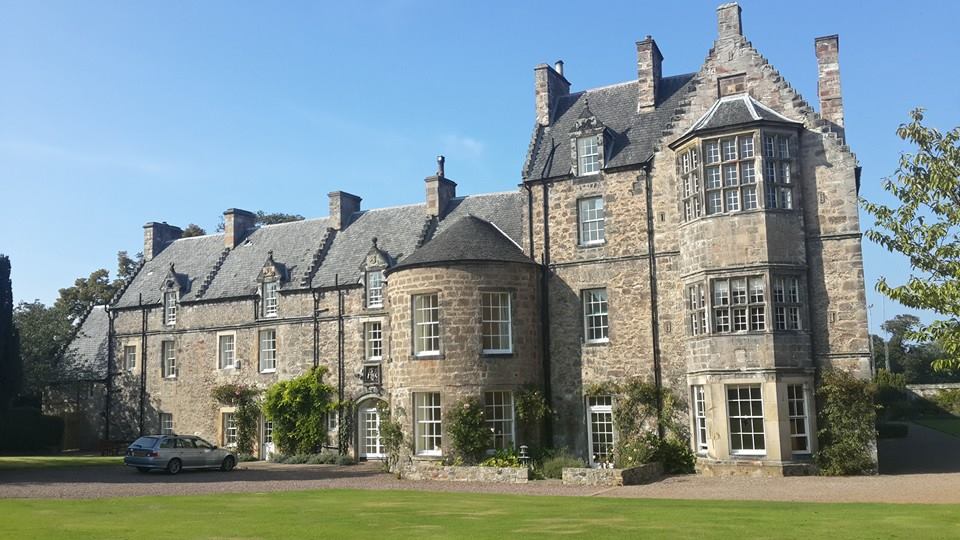On 17 May, 2016, the Centre for Scottish and Celtic Studies welcomed Ian Campbell, Professor of Architectural Theory and History at the University of Edinburgh, to discuss ‘An inventory of a fragment of Alexander Seton’s library at Pinkie House.’ He is currently the convenor of the Scottish Catholic Historical Association. This lecture was based on his work with the manuscript entitled ‘Inventair of som of the Earill of Dunfermline his buiks in Pinkie June 1625.’ Below is this listener’s brief summary of the lecture.
The manuscript transcribed by Ian Campbell listed a portion of Alexander Seton’s library, which listed 127 works in 178 volumes.Most of these appeared to be printed books, except for two which appear to be manuscripts: Codex Sconenis and Institutions of the order of the garter. Sixty-five of these texts were in Latin, twenty-four in French, seventeen in Greek, twelve in English, and nine in Italian. The list was written by his brother-in-law after Alexander Seton’s death in 1622, possibly for the benefit of Alexander’s heir.

The library contained a few Scottish authors, including James VI, William Barclay, Thoma Dempstero, and Thomas Finlason. The list also included many encyclopaedias and dictionaries, Patristics, medieval and contemporary ‘theological’ books, devotional works, and books addressing Church history. This portion of the library also contained books on Geography and History, ‘Modern History’, Antiquarian accounts, ancient literature, and books on humanism and modern literature. A large portion of his library focused on Law and Statecraft, which reflects Alexander Seton’s career as a statesman. While Scotland was not in conflict, he also appeared to be interested in books on military and conflict. The list also contained works related to Natural History, Medicine, Architecture and Fortifications, Mathematics and Geometry, and Timekeeping and Astronomy.
Ian Campbell stated that it was unclear what the purpose of this inventory was. His heir was ten years of age at the time Alexander’s brother-in-law created the list. It is possible that the list was the inventory of one room, or that it was done for the benefit of Seton’s heir. While it is possible that this was composed as a list of “essential books” for a young man such as his heir, it was missing key texts, like Pliny. If this was a list of books in one room of Alexander’s house, how representative is this portion of the rest of his library? The Catholic devotional works suggest that this might have been a personal library kept in Seton’s room at Pinkie. Campbell also wondered what other books Seton might have had. Because the architecture of his many houses, including at Fyvie, appears to have been influenced by Ducerceau, Campbell suggested that a copy of his work was likely present in Scotland during Alexander Seton’s lifetime.
For those who are interested in this topic, Campbell has published an article entitled “An ‘Inventair of som of the earill of Dunfermline his buiks in Pinkie June 1625’: A fragment of the library of Alexander Seton (1555-1622)” in Volume 67 of the Innes Review on 7 May 2016.
This lecture marks the end of this session of this semester’s Seminar Series. Next semester’s schedule will be announced closer to the time, please keep an eye on our Twitter, Facebook, and blog pages for updates!

